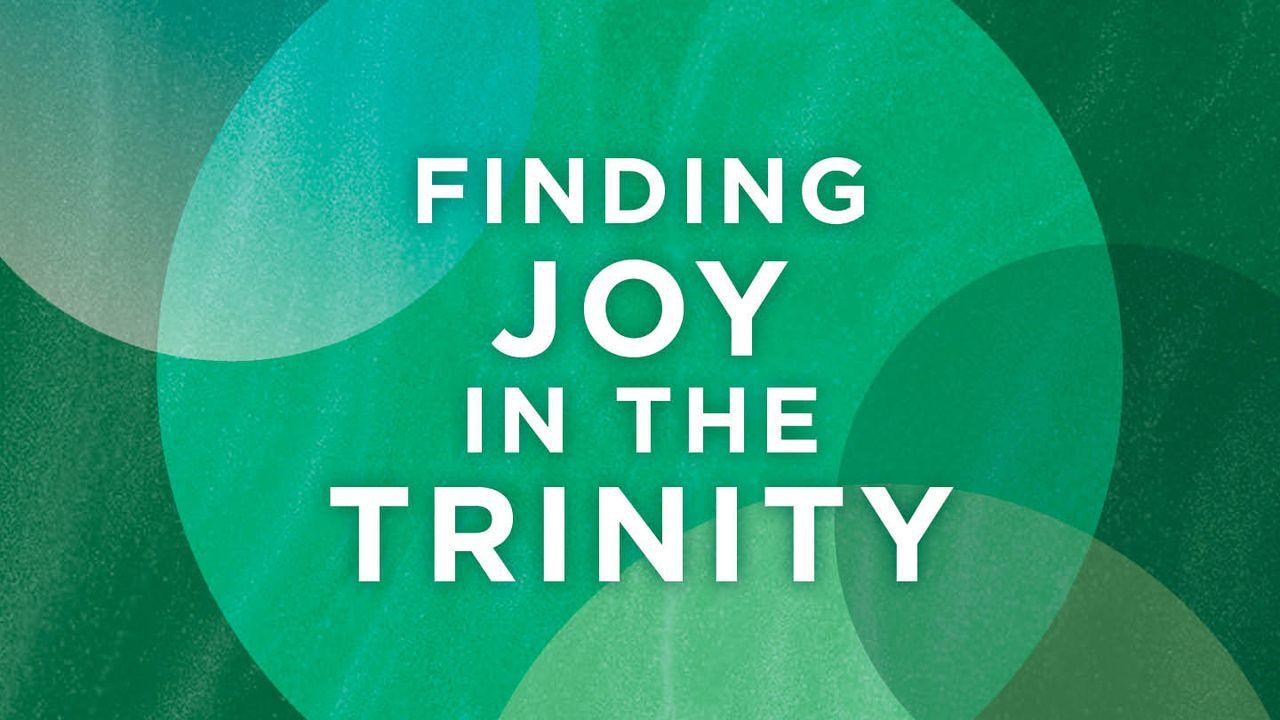Plan Info
Finding Joy in the Trinityनमूना

God’s Diversity
God is one essence (or nature) and three Persons: The Father, Son, and Spirit are all equally and fully God, and ”the being of each Person is equal to the whole being of God.” They’re not only equal in character and personality but in power, glory, and eternality. Since they’re all co-eternal, that means none of them were created by the others. This is important, and it’s one of the places where our modern, Western mindset often fails us because we’re tempted to attach ages to their names.
We think of a father as one who comes before a son and who played a role in creating that son and who must be separate from the son even though they share some DNA. But in the eternal Godhead, the name Father points to One who gives His identity to another person; He is the Unbegotten and the Begetter. The ”Son” is the One who displays that identity.
Hebrews 5:5 describes Jesus as being ”begotten” of the Father, which conveys the idea of the Father appointing the Son, not creating Him. To prevent any confusion about this, theologians often use the phrase ”eternally begotten” to describe Jesus (John 1:1-18).
As for the Spirit, Jesus described Him as the One who ”proceeds from” the Father (John 15:26), and there’s also evidence He proceeds from the Son (John 16:7). While we may not understand this fully, Scripture helps us understand it better.
These descriptions of appointing, sending, begetting, and proceeding tell us a lot about the Trinity: they’re united in their mission, and they have distinct roles as they engage with us in that mission.
Since they are co-eternal and coequal Persons on a united mission, it’s vital for us to remember that one of them isn’t more important than the other.
It’s common to refer to the Persons of God in this order: the Father is the first Person of God; the Son is the second Person of God; and the Spirit is the third Person of God. But it’s important to note that this order doesn’t mean one Person is older or more important than the others. Instead, this order points to God’s progressive revelation in Scripture and in relationship with us.
One of the ways we see the love within the Godhead (another name for the Trinity), is when they talk to or about each other. This happens most often in the New Testament. In the Gospels, we get to eavesdrop on Jesus’ prayer life where He talks directly to the Father, and we also hear Him describing the work of the Holy Spirit to His disciples.
These conversations reveal not only that Father, Son, and Holy Spirit are three distinct Persons, but that they’re each focused on the others, deferring to them and pointing toward their glory out of their love for each other. It becomes clear that they aim to glorify each other.
धर्मशास्त्र
About this Plan

It’s hard to know a God you don’t understand, and it’s hard to love a God you don’t know. But our God wants to be known and loved, and He’s told us a lot about Himself in His Word—particularly that He is a “three-in-one”...
More
सम्बन्धित योजनाहरू

Mentoring Lessons: The Attitude of Serving

God's Awesome Creation

The Apostle's Fast in the Ancient Faith

Three Things That Christians Don't Say

Devotionals From “Life Row”

Faithful God

Sowing and Reaping

Breaking Free From the Comparison Trap

The Faith Code: 14 Day Devotional
